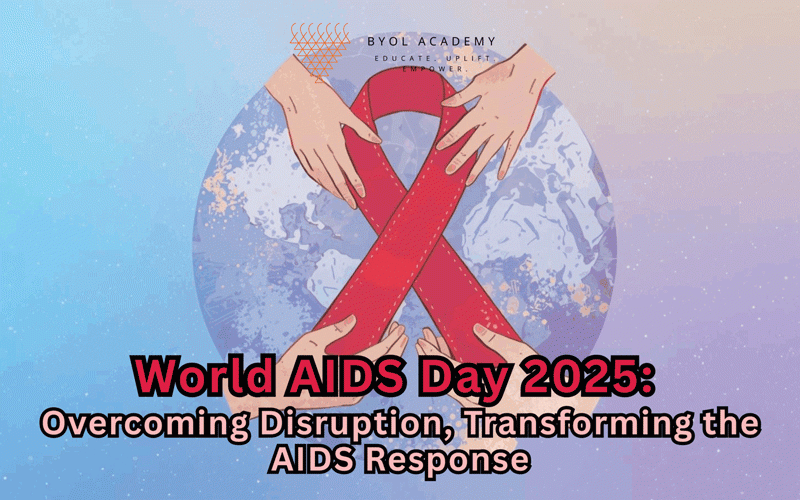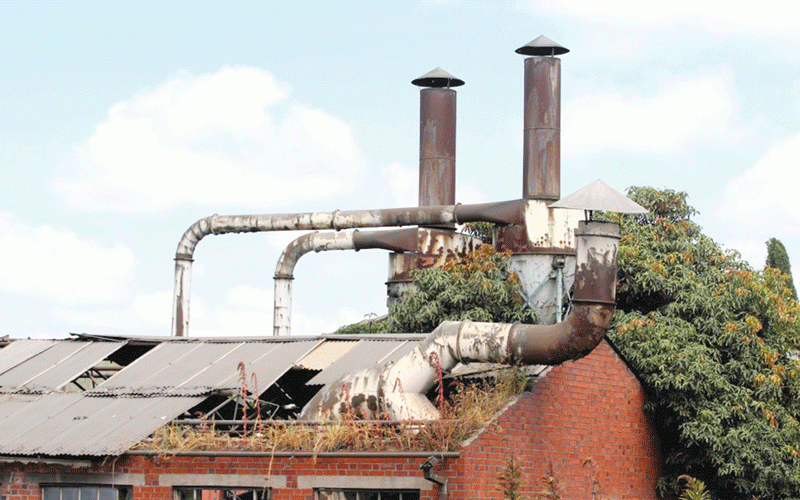
THE business world has faced massive turbulence in recent years. Weather disasters have resulted in serious damages to infrastructure worth billions of dollars and cents.
It appears monumental challenges relating to climate changes are increasing; organisational disruption levels are now at the forefront of daily business life and seemingly becoming ever more present.
The new era of global change is not welcoming. Ongoing geopolitical conflicts have demonstrated the fragility of traditional supply chain ecosystems. The current economic tailspin has not been kind to supply chain practitioners.
The ever-present and ominous shadow that has always lurked over the procurement profession is not disappearing anytime soon. We are trading in an era that is pregnant with uncertainties. The only known constant in today’s world is relentless change.
The new normal will become and remain the only normal. It is a landscape that feels more like quicksand than solid ground. The realm of change is evolving quickly, what is in today is out tomorrow.
Change is no longer a phase to manage; it is a core competent to master. In the real world defined by imperfect information and where nothing moves in a straight-line, the said challenges highlight the utmost importance for establishing sustainable practices that build resilience overtime.
In order to sustain presence and competitiveness in a highly volatile business environment, sustainability issues have become the need of the hour.
Protecting mother earth involves a strong sense of environmental responsibility, which goes beyond recycling paper or the installation of solar panels.
- Abwa commissions milk plant
- In the groove: Has inflation hit the music markets?
- Zimbos snub Zec voter registration programme
- Business opinion: Brand customisation
Keep Reading
Water, forests, biodiversity, minerals and every bit of nature around us deserve attention. John Elkington proposed the triple bottom line model as a way of measuring the social, environmental and financial performance of organisations over time.
The three pillars of the model are put together in a balanced way — no single pillar threatens either of the others and this will ultimately create a long-lasting success in business.
The idea is to calculate the total cost of doing business to get a more accurate picture of a company’s overall impact on society. This therefore calls for the development of a business model that is more circular in nature — a model that makes money but does not hurt our future generations.
In today’s business world, organisations should no longer be judged solely by their financial performance. The idea behind the triple bottom line framework is that organisations should strive to achieve a balance between profit objectives and respect for people and the planet.
All businesses can help the planet by reducing their carbon footprint, ensuring that positive changes will take place this decade and beyond.
Supply chain professionals are acknowledging that it is now more important than ever to achieve success while at the same time considering societal and ecological well-being.
Businesses should consider not only their fat bank accounts but also their broad impact on world sustainability initiatives. Organisations are slowly realising that they have a big responsibility beyond profit generation.
Business people across the industry divide acknowledge that there is significant interdependence between economic prosperity, social well-being and environmental sustainability.
Organisations are now required to put people and planet issues at the heart of the business, at par with profits. The triple bottom line emerged as a response to the limitation of traditional financial reporting, which focused solely on profit and shareholder value.
In the context of the triple bottom line, profit can mean more than just how much money a company makes. The triple bottom line reframes success beyond financial spreadsheets and quarterly reports.
The idea is to view profit as a tool for positive transformation, not just a number on a balance sheet. The triple bottom line illustrates a concept where purpose meets profit, and where responsibility for sustainability becomes a business asset.
A healthy planet underpins every other pursuit. Protecting nature is therefore non-negotiable. Like a three-legged stool, each component — people, planet and profit — is equally important and necessary.
The triple bottom line can be envisioned as a three-legged stool, with one leg representing people, one leg representing the planet and one leg representing profit.
The words of Mahatma Gandhi ring true — the world has enough of everyone’s need, but not enough for everyone’s greed. The triple bottom line remains a distinguished concept in sustainability discourse, guiding businesses towards a more all-inclusive understanding of their impacts and responsibilities.
It has become part of everyday business language to promote social and environmental results in the same way as financial results. Supply chains are not expected to be perfect in this regard; they are expected to make conscious choices that add up over time.
People increasingly want to be associated and aligned with business organisations that are socially conscious at the highest level. This approach forces supply chain professionals to think about businesses in a more holistic outlook, beyond the figures at the end of an excel spreadsheet.
There is a full realisation that often times, supply chains may be highly profitable but at the expense of employees and society at large.
Organisations are expected to promote the social well-being of its employees and address social issues, enabling the organisation’s mandate to go beyond traditional profit-focussed metrics.
Everyone wants to be associated with sustainability initiatives that make a huge impact in the world. Under the triple bottom line framework, profit is important, but it is not everything.
The triple bottom line concept, therefore, pivots planet and people issues at the heart of the business model. Business has got a role to play in creating a more sustainable and equitable future.
The enduring value of the concept lies in its ability to foster awareness that sustainability is the only benchmark for the future. The triple bottom line model pushes beyond shareholder returns and drives accountability towards environmental stewardship.
It is a concept designed to reshape business strategies in line with sustainability practices. The adoption of circular practices will enable organisations to contribute to the well-being of communities, promoting local employment and embracing social cohesion in the process.
The circular economy strives to achieve the conservation of ecosystems, the reduction of greenhouse gas emissions and the promotion of the transition to a low-carbon economy.
The triple bottom line could easily offer numerous benefits such as enhanced brand reputation, improved risk management, increased employee satisfaction and retention, access to new markets and improved resilience to environmental and social changes.
A sustainable business model is not just a moral business imperative; it is a strategic one.
Organisations must be pushed to improve their environmental responsibility with the same effort they use to maximise profits. Sustainability should be regarded as a built-in part of the business strategy, not just a side effort.
Organisations are challenged to champion the reduction of waste, conservation of natural resources and the adoption of ecofriendly practices.
Organisations are seriously encouraged to take a big-picture view of how their strategic decisions impact society and the environment. This will attract eco-conscious consumers and sustainability-focused investors.
We have every good reason to believe that solving the world’s current sustainability challenges could easily present trillions of dollars’ worth of economic activity.
The fewer the natural resources you consume, the longer and more sustainability your business model will be. The environmental pillar of the triple bottom line therefore focuses on environmental stewardship, conservation of natural resources, and reduction of waste and carbon footprint.
This will promote the transition to a low-carbon economy resulting in the growth of healthy planets thereby safeguarding our natural capital for the future.
Measuring the people side of things is also important under the triple bottom line concept. At the heart of every organisation are the people who make all things happen. There is a common acknowledgement that there is no one that knows your business better than the people who are working there already.
In a highly sustainable organisation, people feel valued. They are given opportunities to advance, learn, unlearn and relearn without any fear of failure.
Social equity focusses on giving everyone a fair shot. Business leaders should focus on building stronger social safety nets to cut down inequalities. Employees related issues under the triple bottom line will encompasses fair labour practices, respect for human rights, promotion of employee well-being as well as the promotion of diversity and inclusion principles.
There is need to understand and appreciate the people side of the business. Organisations are generally regarded as agents of positive change in their communities when they are actively involved in advancing the cause of human rights and giving commitment towards ending hunger and homelessness while promoting company cultures built on giving back to communities.
Variables that are relied upon to measure people side of the triple bottom line include a conducive working environment, fair salaries and benefits, diversity related factors as well as equity and inclusion initiatives.
Organisations are specifically encouraged to invest in their people by providing recognition, rewards and incentives. The pillar, which centres on social responsibility, seeks to support communities, employees and society at large.
Businesspeople are encouraged to create positive social impacts while at the same time promoting ethical behaviour and respecting human rights.
Social performance can be achieved through offering highly-competitive remuneration packages while at the same time promoting staff training and development.
Organisations that participate in community development programmes or those that sponsor educational initiatives or those that support underprivileged groups are credited for promoting the people aspect of the triple bottom line.
The triple bottom line tries to assist businesspeople to stay true to ethical values while remaining profitable.
In conclusion, it must be noted that the adoption of a triple bottom line approach may seem idealistic and unrealistic given a world order that seem to give more emphasis to profits over purpose.
But it has been proven over the years that it is possible to do well by doing good. It is possible to actually do the right things and make big and good money at the same time.
No single bottom line can sustain a business alone. When everything is so tightly knit, trade-offs are inevitable. An increasing number of organisations across industry verticals are fully committed to not just being the best in the world but also the best for the world.
However, hurdles to turn this framework into a reality are not small ones. But the real value comes over time and requires significant time and effort. Supply chain professionals are required to put in more effort where it counts the most.
It must be remembered that change does not happen to individuals. It happens because of individuals. Change is no longer a season. It is the climate.
Success is never a single moment. It is a collection of small consistent actions stacked quietly, day after day, and the cold light of reality will begin to emerge. After all, finding the right carrot can take some digging.
Nyika is a supply chain practitioner based in Harare. — [email protected]











